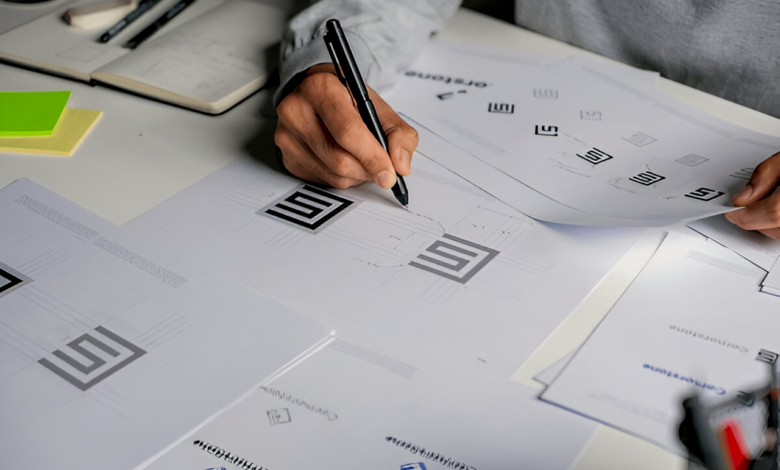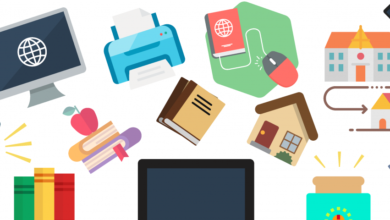Graphic Design for Beginners: How to Get Started Today
How to Get Started Today – Learn essential tips, tools, and principles to kickstart your graphic design journey. Perfect for beginners!

Graphic design is a powerful and creative field that combines art, technology, and communication to convey messages visually. For beginners, diving into graphic design can feel overwhelming, but with the right guidance, tools, and mindset, anyone can start their journey today. Whether you’re looking to pursue a career, enhance your skills, or simply explore a new hobby, this guide will walk you through the essentials of graphic design, from understanding the basics to mastering advanced techniques. By the end of this article, you’ll have a solid foundation to begin creating stunning visuals and expressing your ideas effectively.
Graphic design is everywhere—from logos and websites to posters and packaging—and it plays a crucial role in shaping how we perceive the world. As a beginner, the key is to start small, stay consistent, and embrace the learning process. This article will cover everything you need to know, including the principles of design, essential tools, tips for building a portfolio, and resources to help you grow. Let’s dive into the exciting world of graphic design and discover how you can get started today.
Understanding Graphic Design
Graphic design is the art of creating visual content to communicate messages. It involves combining images, text, and other elements to produce designs that are both aesthetically pleasing and functional. As a beginner, it’s important to understand that graphic design is not just about making things look good; it’s about solving problems and conveying ideas in a way that resonates with the audience.
The field of graphic design is vast and includes various specializations such as branding, web design, illustration, and motion graphics. Each area requires a unique set of skills, but they all share common principles. By learning these principles, you can create designs that are effective and impactful.
The Principles of Graphic Design
To create compelling designs, you need to understand the fundamental principles of graphic design. These principles serve as the foundation for all visual work and include balance, contrast, alignment, repetition, proximity, and space.
Balance refers to the distribution of visual weight in a design. It can be symmetrical, asymmetrical, or radial, depending on the desired effect. Contrast involves using opposing elements, such as light and dark colors or thick and thin lines, to create visual interest. Alignment ensures that all elements in a design are properly positioned, creating a sense of order.
Repetition reinforces consistency by repeating certain elements throughout the design. Proximity groups related items together to establish a connection, while space (both positive and negative) helps to organize the design and guide the viewer’s eye. Mastering these principles will enable you to create designs that are visually appealing and easy to understand.
Essential Tools for Graphic Design
As a beginner, you’ll need to familiarize yourself with the tools of the trade. The most popular graphic design software includes Adobe Photoshop, Illustrator, and InDesign. These programs are industry standards and offer a wide range of features for creating and editing designs.
Photoshop is ideal for photo editing and digital painting, while Illustrator is perfect for creating vector graphics like logos and illustrations. InDesign is commonly used for layout design, such as magazines and brochures. While these tools can be expensive, Adobe offers affordable subscription plans for students and beginners.
In addition to software, you’ll need a reliable computer or laptop with sufficient processing power and memory. A graphics tablet can also be helpful for drawing and sketching. As you progress, you may want to explore other tools like Canva, Figma, or Procreate, depending on your specific needs.
Learning the Basics of Typography
Typography is a critical aspect of graphic design that involves the arrangement and styling of text. Choosing the right fonts and understanding how to use them can make or break a design. As a beginner, it’s important to learn the difference between serif, sans-serif, script, and display fonts, as well as how to pair them effectively.
Serif fonts, such as Times New Roman, are often used for traditional or formal designs, while sans-serif fonts like Helvetica are more modern and versatile. Script fonts mimic handwriting and are ideal for elegant or creative projects, while display fonts are decorative and best used for headlines or logos.
When working with typography, pay attention to factors like line spacing, kerning, and hierarchy. Proper spacing ensures readability, while hierarchy helps guide the viewer’s eye through the design. By mastering typography, you can create designs that are not only visually appealing but also easy to read and understand.
The Role of Color in Graphic Design
Color is one of the most powerful tools in a designer’s arsenal. It can evoke emotions, convey messages, and create a sense of harmony or contrast in a design. As a beginner, it’s important to understand the basics of color theory, including the color wheel, complementary colors, and color harmony.
The color wheel is a visual representation of colors arranged in a circle. It includes primary colors (red, blue, and yellow), secondary colors (green, orange, and purple), and tertiary colors (a mix of primary and secondary colors). Complementary colors are opposite each other on the wheel and create a strong contrast when used together.
Color harmony refers to the pleasing arrangement of colors in a design. Common color schemes include monochromatic (variations of a single color), analogous (colors next to each other on the wheel), and triadic (three evenly spaced colors). By understanding these concepts, you can create designs that are visually cohesive and impactful.
Building Your Design Skills
Practice is key to improving your graphic design skills. Start by working on small projects, such as creating social media graphics, posters, or logos. Experiment with different styles, techniques, and tools to find what works best for you. Don’t be afraid to make mistakes—every design is an opportunity to learn and grow.
One effective way to build your skills is to recreate designs you admire. Analyze what makes them successful and try to replicate their elements in your own work. You can also participate in design challenges or competitions to push yourself out of your comfort zone and gain valuable feedback.
Additionally, consider taking online courses or tutorials to learn new techniques and stay updated on industry trends. Platforms like Skillshare, Udemy, and Coursera offer a wide range of graphic design courses for beginners. By dedicating time to practice and learning, you’ll gradually develop your own unique style and become a more confident designer.
Creating a Portfolio
A portfolio is essential for showcasing your work and attracting potential clients or employers. As a beginner, your portfolio doesn’t need to be extensive—focus on quality over quantity. Include your best projects and highlight the skills and techniques you’ve mastered.
When building your portfolio, consider the type of work you want to do. If you’re interested in branding, include logo designs and brand identity projects. If you prefer web design, showcase website layouts and user interface designs. Make sure your portfolio is well-organized and easy to navigate.
You can create an online portfolio using platforms like Behance, Dribbble, or your own website. Include a brief description of each project, explaining the goals, process, and outcomes. A strong portfolio not only demonstrates your skills but also tells the story of your growth as a designer.
Networking and Finding Opportunities
Networking is an important part of building a career in graphic design. Connect with other designers, join online communities, and attend industry events to expand your network. Platforms like LinkedIn, Instagram, and Twitter are great for sharing your work and engaging with others in the field.
Don’t be afraid to reach out to potential clients or employers. Start by offering your services to friends, family, or local businesses. You can also look for freelance opportunities on platforms like Upwork, Fiverr, or 99designs. Building a strong network and gaining real-world experience will help you grow as a designer and open doors to new opportunities.
Staying Inspired and Creative
Creativity is at the heart of graphic design, but it’s not always easy to stay inspired. Surround yourself with sources of inspiration, such as art, nature, music, or other designers’ work. Keep a sketchbook or digital folder to jot down ideas and collect visual references.
It’s also important to take breaks and recharge your creative energy. Experiment with new techniques, explore different styles, and step out of your comfort zone. Remember that creativity is a process, and it’s okay to have moments of doubt or frustration. By staying curious and open-minded, you’ll continue to grow and evolve as a designer.
Read More: Gaming and Learning: How Video Games Can Boost Cognitive Skills
Conclusion
Graphic design is a rewarding and dynamic field that offers endless opportunities for creativity and self-expression. As a beginner, the key is to start small, stay consistent, and embrace the learning process. By understanding the principles of design, mastering essential tools, and building a strong portfolio, you can set yourself up for success in this exciting industry.
Remember that graphic design is a journey, not a destination. Keep practicing, stay inspired, and don’t be afraid to take risks. With dedication and passion, you can turn your love for design into a fulfilling career or hobby. So, what are you waiting for? Start your graphic design journey today and unlock your creative potential.
FAQs
What is graphic design?
Graphic design is the art of creating visual content to communicate messages. It involves combining images, text, and other elements to produce designs that are both aesthetically pleasing and functional.
What tools do I need to start graphic design?
Essential tools include design software like Adobe Photoshop, Illustrator, and InDesign, as well as a reliable computer or laptop. A graphics tablet can also be helpful for drawing and sketching.
How can I improve my graphic design skills?
Practice regularly, take online courses, and seek feedback from others. Experiment with different styles and techniques to find what works best for you.
Do I need a degree to become a graphic designer?
While a degree can be helpful, it’s not necessary. Many successful designers are self-taught and have built their careers through practice, networking, and a strong portfolio.
How do I build a graphic design portfolio?
Include your best projects and highlight the skills you’ve mastered. Create an online portfolio using platforms like Behance or your own website, and make sure it’s well-organized and easy to navigate.







